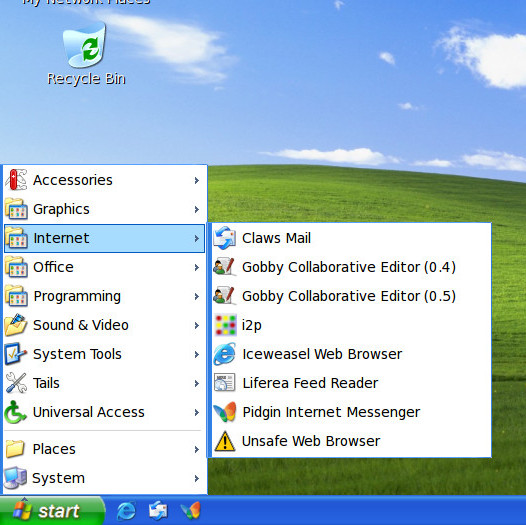Chunkey
As an avid watcher of the History Channel with a generally curious nature, I have more than the average familiarity with the American pyramids. In all of that watching and reading though, I never came across the story of chunkey. In case you didn’t know, chunkey was the football/soccer of the pre-European Americas. The game involved teams of two, one with a small disk made from stone, and one with a spear. The first player would roll the stone out onto the field, and the next would try to place the spear as close as possible to the stone. There is a good article on the influence of the game at io9 and you can find more on the game at wikipedia.
Solar Freakin Roadways
Clearly, as the video illustrates, there are many obvious benefits to this idea. The big rub here is whether or not the solar roadway will ultimately be cost effective. If they are going to require a concrete road for the panels to be placed on top of, they are going to be much more expensive than your typical asphalt roadway. How long is it going to take those panels to produce enough energy to recoup those additional expenses? That remains to be seen.
So begins the rise of the machines…
You may have never heard of Eugene Goostman, but his is a name that will go down in history. Eugene is a 13 year old from Odessa (Ukraine, not Washington), that just passed the Turing Test. Rather, a group of Russian programmers that created the program that presents itself as Eugene passed the Turing Test.
The scifi bent on this is that it is the next small step on the way to a real A.I., which may or may not bring about the destruction of all mankind. In actuality, it is less about creating A.I. than it is about clever programming slight of hand that enables the program to fool a group of testers. The fact that Eugene is 13 and not a native English speaker certainly worked in his favor.
Eugene managed to fool a third of the testers, just eclipsing the 30% required for passing. If you are curious to know what those chats might have looked like, TIME conducted an interview with Eugene. I am guessing that round would have fallen in the 67%. It is still an important milestone being passed. Each huge moment in technology is approached with tiny steps, like this.
Put some Seattle on your desktop
We are getting an early start on summer in the Jet City, and there is nothing like Seattle when the weather is nice. I took this shot of the space needle last night as I was on my way to a theatre adventure. Click it to get the huge image for your desktop.
Getting Started With Open Stack
With the rise of cloud computing, and the accompanying popularity of Open Stack, there is no shortage of pages on the internet talking about how to get started experimenting in the Open Stack world. I’ve recently been playing with Red Hat’s RDO version. The documentation is not the deepest, but it is solid, and the biggest strength of RDO is the speed to get it up and running. You can having a working Open Stack system in under an hour. Of course, that is just the first toe down the Open Stack rabbit hole, but if you are curious, it is a great place to start.
Sony announces 185TB magnetic tape
There is an interesting press release on Sony’s site, announcing that they have developed a new nano-grained magnetic layer for magnetic tapes. The big story here is that this new technology has shown to allow a staggering recording density of 148 gigabits per square inch. That is some 74 times the density of current magnetic tape media. A tape cartridge using this technology would be able to hold the 185TB from the headline. That is amazing.
Cosmology says the universe is expanding!
Hubble Telescope images suggest items in the universe are getting farther away from one another!
A better analogy is the surface of an expanding balloon. Not the 3 dimensional balloon, just its 2 dimensional surface. If you were an ant crawling around the surface of a huge balloon, and the balloon was your whole universe, you would see the balloon as essentially flat under your feet.
Read more: http://www.universetoday.com/1455/podcast-what-is-the-universe-expanding-into/#ixzz30aR2aunR
Tails 1.0
If you have been following the Edward Snowden story, chances are that at some point you have heard mention of Tails. That is, the operating system that Snowden used to remain anonymous. It is now available for download at the Tails website.
On the surface, it doesn’t sound like anything new. Describing it as an amnesiac operating system is a clever bit of marketing, but various distributions have been doing that with live CDs for years. What sets Tails apart is single-minded dedication to security and privacy. With all internet traffic funneled through Tor, and state-of-the-art cryptographic tools, everything about the system is configured to leave no trace.
It even goes so far as to offer an XP mode (pictured), so passers by won’t be alerted by an unfamiliar desktop. You have to look pretty close to realize that those are not your father’s Windows XP applications. It’s all very interesting and well worth a look, even if you don’t think you need it now. You never know what’s coming down the pike.
The Hans Monderman traffic plan
This video makes my motorcycle riding brain a bit jumpy. That is a major intersection in Addis Ababa, Ethiopia, and it has no traffic signs. Cars, bikes, vans, buses, and pedestrians just make their way. It’s fascinating to look at, and there is some method to this madness.
Hans Monderman was a Dutch traffic engineer, perhaps best known for his ‘shared space’ concept. The idea is that when you remove all of the signs, markings, and regulations, safety is improved as all those involved must negotiate their travels with their fellow travelers. It’s an interesting idea, and it certainly moves faster than 520 on a weekday evening, but I think I’ll still opt for a Red-Yellow-Green light.
The cell phone with a 10x zoom
Samsung continues to try to push the boundaries of cell phone photography by integrating an optical zoom lens. The Galaxy S4 Zoom was not well received, likely due to its 28mm thickness. Try, try, trying again, they have announced the Galaxy Zoom K. Notably, it is just 18mm thick. That is, admittedly still a bit thick by cell phone standards. The Galaxy S5 is 8.1mm. But that extra 9.9mm does get you a 24-240 equivalent lens, which is impressive.
Ranging from F3.1 to 6.3, the lens is a bit on the slow side, but that will be somewhat mitigated in non-action situations with the optical image stabilization. The rest of the hardware is solid, if not groundbreaking. You have a 4.8 inch screen, six core CPU, 2GB RAM, and the usual radios. It will be interesting to see if the idea can catch on, bringing some of the other manufacturers into the expanded camera capabilities game. You can find more info and pictures at DPReview.






